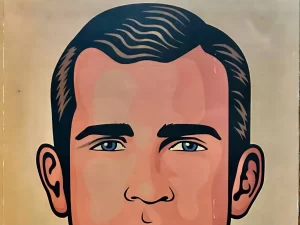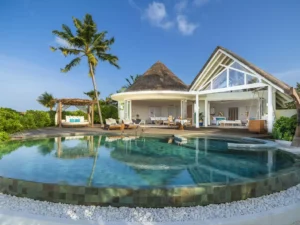She is often described as Queen Victoria’s goddaughter. She was not. But the Queen protected her throughout her life.
The world knew her as Sarah Forbes Bonetta, but she was Princess Omoba Aina, the daughter of an Egbado prince, a clan of the Yoruba people. She was captured by King Gezo of Dahomey (now Benin) in 1848 during a slave-hunting war, and her parents were beheaded.
Two years later, in July 1950, Frederick Forbes, a distinguished naval captain in the West Africa Squadron, visited King Gezo on a diplomatic mission. Britain had abolished slavery throughout the Empire in 1833, and his mission was to undermine the abhorrent trade by intercepting French and Spanish slave ships and using diplomacy to dissuade African leaders from selling their human cargo. King Gezo used slaves as a major source of revenue. It was during this visit that Captain Forbes met the little princess, then seven years old, who was to be offered as a human sacrifice.

Forbes saved the girl’s life by persuading the king to give the child to Queen Victoria, saying: “She would be a gift from the king of the blacks to the queen of the whites.” They then gave the young girl the name Sarah Forbes-Bonetta, after his ship, HMS Bonetta. The name change signalled her separation from her African roots.
A few months after their arrival in England, Forbes presented Sarah to Queen Victoria at Windsor Castle in November 1850. The Queen had always been fascinated by her colonial subjects, something very rare among the aristocracy of the time, and she was impressed by the bright and intelligent toddler. Deeply saddened by the little princess’s plight, she decided to take up her cause, affectionately naming her Sally and becoming her protector and friend until her marriage.
Thus began the extraordinary transformation of Sarah’s life. She lived with the Forbes family and visited the Queen regularly. She quickly learned English well and had a great talent for music, being far ahead of any white child of her age in aptitude, learning, strength of mind and affection. Forbes was delighted with her progress:

In 1851, however, Sarah was sent to the Church Missionary Society school in Freetown, Sierra Leone, with the intention of becoming a missionary herself. (She had begun to suffer from a cough, and it was widely believed at the time that the English climate was detrimental to the health of Africans).
While Sarah was in Freetown, the Queen continued to send her gifts and books. Apparently unhappy there, Sarah returned to England after four years. Queen Victoria then placed her with the Schoen family, former missionaries to Africa, who lived in Gillingham, Kent. Sarah lived with them for six years before moving, much against her wishes, to Brighton, where the monarch had arranged for a Miss Welsh to oversee her introduction to British society.

At Midsummer and Christmas, she often went to either Windsor or Osborne on the Isle of Wight to stay with one of the Queen’s Household Officers, and the Queen often called on her privately. She became very close to the Queen’s second daughter, Princess Alice. These were keen to scrutinise Sarah’s achievements, particularly in the press, to see what light they would shed on the then widespread racist belief in the intellectual inferiority of Africans. In January 1858, as a sign of the Queen’s affection, she invited her to the wedding of her eldest daughter, Victoria, the Princess Royal.
At the age of 18, she was proposed to by James Pinson Labulo Davies, a 31-year-old Yoruba entrepreneur of considerable wealth living in Britain. Queen Victoria sanctioned Sarah’s marriage at St Nicholas Church in Brighton in August 1862. The wedding party, which arrived from West Hill Lodge in Brighton in ten carriages and pairs of grey coaches, consisted of ‘white ladies with African gentlemen, and African ladies with white gentlemen’, and there were sixteen bridesmaids. On returning to West Africa, the newlyweds arranged for Sarah to be baptised in a church in the town of Badagry, a former slave port. They settled in Lagos, where her husband became a member of the Legislative Council from 1872-74 (in which year the Lagos Colony was temporarily amalgamated with the Gold Coast). Shortly after her marriage, Sarah gave birth to a daughter and received permission from the Queen to name the child Victoria. – The Queen became her godmother.

Sarah visited the Queen with her daughter in 1867, then returned to Lagos and had two more children. Later, on Sarah’s death, the Queen wrote in her diary: “Saw poor Victoria Davies, my black godson, who learned this morning of her dear mother’s death. When Sarah’s daughter passed her music exams, Queen Victoria felt so proud that she gave teachers and children a day off. Throughout her life, Sarah suffered from a persistent cough caused by the change in climate between Africa and Britain. In 1880, she went to Madeira for convalescence after having tuberculosis. She died in 1880, at the age of around 40, and people buried her in the British cemetery in Funchal.
The Queen gave a pension to her goddaughter Victoria Davies. She continued to visit the palace throughout her life. She had two children, Jack and Beatrice, and their descendants now live in Lagos.












